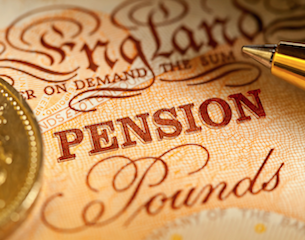The Office for National Statistics (ONS) has revealed that the largest pension in the UK, as per ONS data, amounts to around £11m.
This information was obtained through a series of Freedom of Information (FOI) requests made by the wealth management company RBC Brewin Dolphin.
However, a source close to Corporate Adviser has revealed a £45m pension, resulting from a massive increase in the value of tech shares held within his self-invested personal pension (Sipp).
Analysts estimate that 929,000 investors have accumulated pension funds between £1m and £2m based on data gathered in 2022. Additionally, 46,000 investors have investments of £3m or more, while 128,000 people have pensions worth between £2m and £3m.
The ONS estimates that a pension worth about £374,500 is needed to be in the top 10 per cent of retirement savers, with £637,500 being the median.
According to RBC Brewin Dolphin, a comfortable retirement demands at least £37,300 per year in income. The retiree would require a pension fund of £630,000 to reach that goal.
RBC Brewin Dolphin investment manager Rob Burgeman says: “Making use of tax reliefs is crucial: a basic rate taxpayer saving £80 of take-home pay into a pension gets a £20 top-up from HMRC, making a total investment of £100 — or an instant return of 20 per cent. As Paul Daniels used to say, ‘that’s magic.’
“Then there’s the mathematical phenomenon of compounding or interest on your interest. Albert Einstein called it ‘the eighth wonder of the world’ — and who are we to argue with the great man.
“Factoring in tax relief, a £100-a-month plan would only actually cost an investor £80 per month, bringing total contributions to £9,600 after ten years.
“But as your pot grows you are gaining interest on your increased amount, meaning your pension wealth could balloon to £15,592, assuming 5 per cent annualised returns after fees.
“Over 20 years, the same plan could see contributions of £19,200 more than double to £41,274. Another decade still and £28,800 could become £83,572. After 40 years, contributions of £38,400 could soar to £153,237.
“There’s no question that the magic of compounding mixed with some sound tax advice makes for an extremely potent cocktail.”
Burgeman adds: “Someone entering the workforce today aged 18 and paying £389-a-month into their pension could reasonably expect to retire with a £1million pot aged 68 assuming annualised returns of 5 per cent after fees.
“In the first decade, the investor’s pot could grow to £60,181 based on investments of £46,680. Ten years later their nest-egg could have more than doubled in size to £158,210 based on contributions of £93,360. And after 30 years, they could have accumulated £317,889 on investments of £140,040.
“By the time they’ve clocked up 40 years in the workforce, they could be sitting pretty on a retirement fund of £577,990 based on contributions of just £186,720.
“But it’s in the last decade before retirement that the millionaire jackpot finally becomes a reality. After 50 years, the pot could well have smashed through the seven-figure mark on contributions of just £233,400.
“The figures leave little doubt that compounding can be like rocket fuel for your pension. And if you don’t live to spend it all, you can usually pass it on to the next generation without losing anything in inheritance.”
“Remember, pensions are one of the most tax-efficient ways of funding your retirement. A £10,000 contribution costs a basic-rate taxpayer £8,000, and a higher rate taxpayer just £6,000 due to tax savings.”





